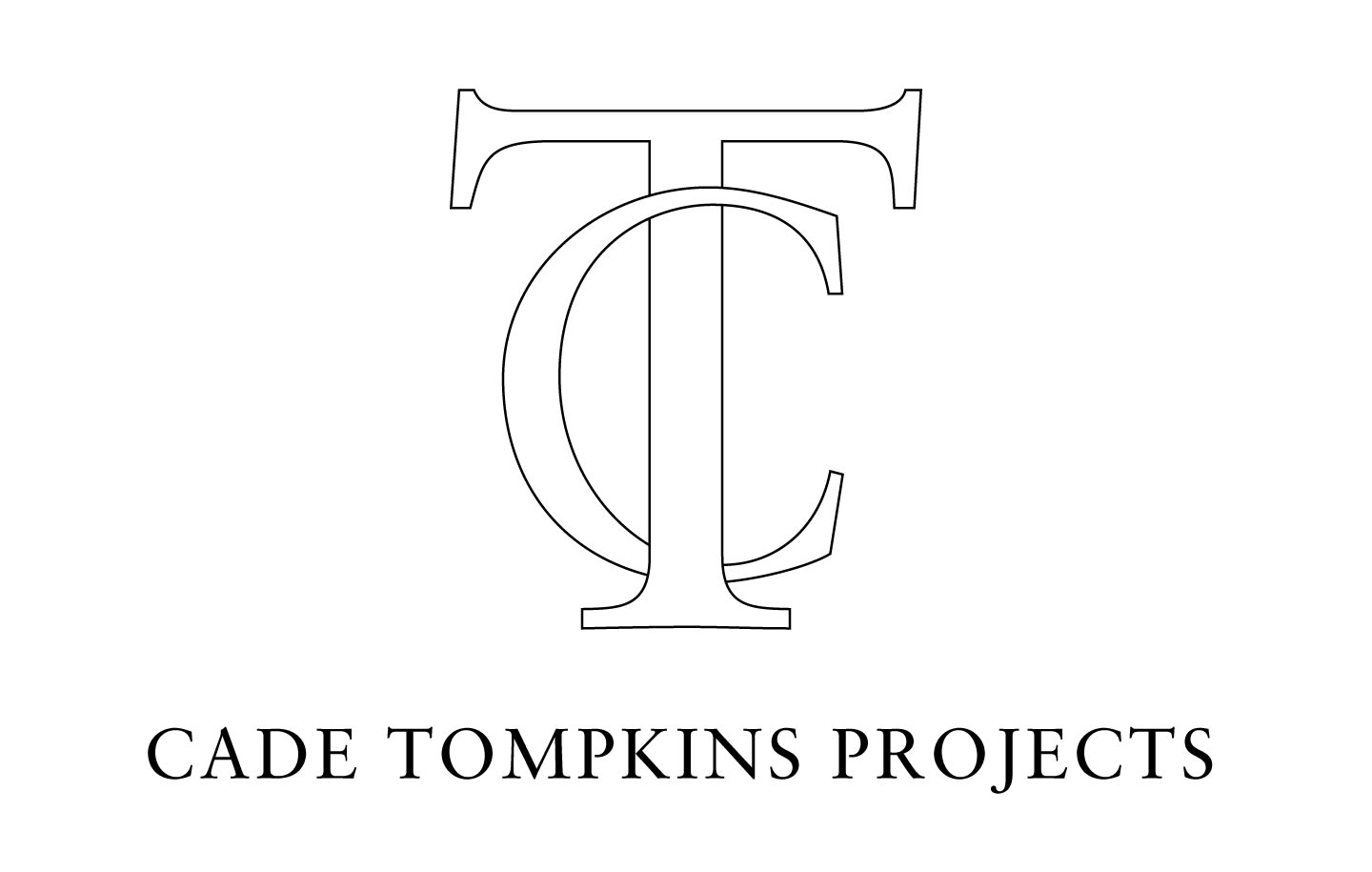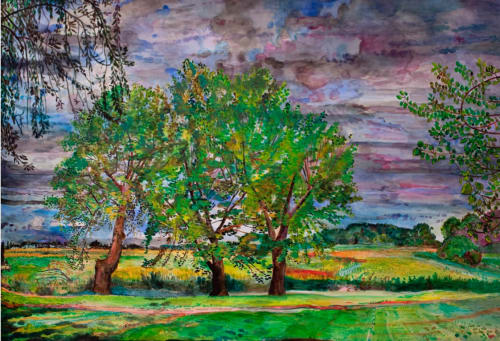In the art-world lexicon, few terms are more fraught than “en plein air,” a French phrase that literally means “in the open air.” When applied to art, and particularly when applied to painting, “en plein air” inevitably conjures up images of the elderly Monet dozing over his sketchpad at Giverny or of Renoir and Pissarro patiently daubing at their easels along the banks of the Seine. Calling someone a “plein-air painter,” in other words, sets a high bar.
Fortunately, there’s nothing plain about the plein-air paintings (actually, large-scale watercolors than have been mounted on canvas) that Nancy Friese is showing at Cade Tompkins Projects. Indeed, the dozen or so works in “Nancy Friese: Monumental Watercolor Paintings” shine for many of the same reasons that paintings by Monet and Renoir do: a keen eye for the subtle effects of light and atmosphere; a taste for rich, even sumptuous color, and an obvious love of nature and the natural world.
At the same time, Friese is no Monet wannabe. A longtime professor at the Rhode Island School of Design, she’s obviously a fan of Impressionism’s lush, sun-dappled style. But that doesn’t stop her from channeling other art- historical schools and styles: 17th-century Dutch landscape painting, 18th- century British watercolors and the 19th-century Hudson River School, to name just a few. Tone down the vibrant colors and textural effects in “Cottonwood, Box Elder and Poplar,” for example, and you’d have a pretty good Dutch Old Master landscape. Rembrandt, in particular, was a fan of the three-trees-in-a-field theme, which he used to evoke the three crosses of the Crucifixion.
Another painting, “Mountain Valley,” pays its respects to Hudson River School artists such Thomas Church and George Inness. Here, again, the painting’s formal elements — mainly color and texture — are unabashedly contemporary, while the subject — a mountain valley bathed in sunlight, but threatened by an approaching storm — looks back to the art of another era.
Perhaps the most surprising thing about Friese’s work is its scale.
While traditional watercolors tend to be relatively small, Friese’s “monumental watercolors” are roughly the size of large posters or paintings. For contemporary viewers, who are used to seeing supersize artworks, the larger format probably feels more “natural.” But it also carries greater risks. If Friese’s brush starts to wander — or if her color sense suddenly goes on holiday — the bigger scale will only magnify the problem. (Fortunately, Friese has the painting chops to pull it off.)
Time is also a factor in Friese’s work. Rather than dashing off a painting in a few hours, she often returns to the same location (often a park or arboretum) several times over a period of months. The result is a denser and more deliberate watercolor painting than many of us are used to.
Still, looking at works such as “Mountain Valley,” with its crazy-quilt patchwork of colors, or “Evening Light,” with its glittering array of lighting effects, or “Nighttime,” with its Tiffany-worthy evening sky, it’s hard to imagine paintings that feel more joyously and spontaneously alive.
“Nancy Friese: Monumental Watercolor Paintings” runs through Aug. 6 at Cade Tompkins Projects, 198 Hope St. in Providence. Hours: Saturdays 10-4 or by appointment. Contact: (401) 751-4888 or www.cadetompkins.com.


